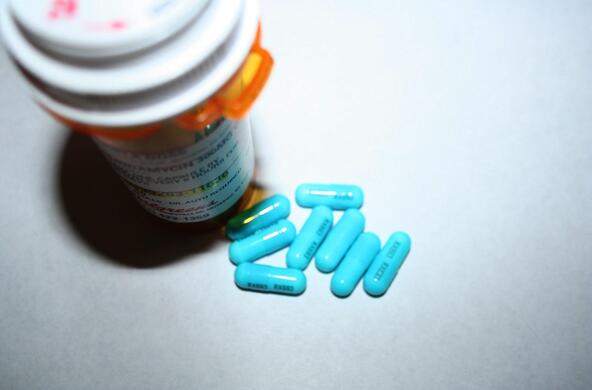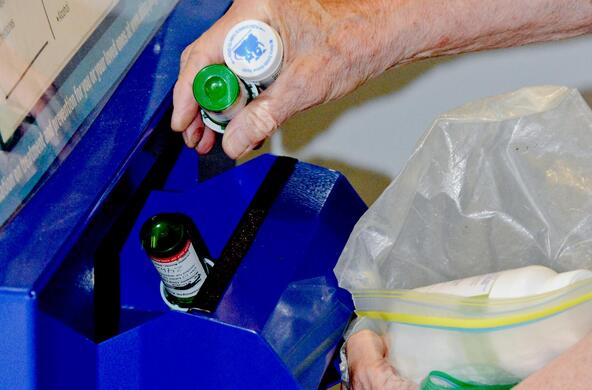Most streams that flow near cities and towns are laced with drugs that escape from sewage treatment plants or pharmaceutical factories. Although often occurring at concentrations of a few parts per trillion, these compounds can nevertheless hurt aquatic life, turning male fish into female fish with hormones or giving them the munchies with antianxiety medication. Now comes the first study that shows an effect of drugs on the base of the food web—the nutritious microbial slime that covers the streambed. Experts caution, however, that the work is preliminary.
There's a long list of chemicals that go down the drain, pass through sewage treatment plants, and end up in streams: antibiotics, caffeine, and ingredients in soaps and shampoos, to name just a few. Emma Rosi-Marshall, a stream ecosystem ecologist at the Cary Institute of Ecosystem Studies in Millbrook, New York, and colleagues in Illinois and Indiana, were curious about the impact of common chemicals on photosynthesis and respiration, which are fundamental to the life of an entire ecosystem. Measuring these processes is "like taking the pulse of a stream," Rosi-Marshall says.
The team examined biofilms, which are agglomerations of bacteria, algae, fungi, and organic matter that coat rocks on streambeds. Biofilms matter in part because fish, snails, and insects nibble at them for nourishment. But no one had looked at the impact of pharmaceuticals on the ecological functions of this slippery stuff. The researchers adapted a technique used to study the impact of excess nutrients on stream ecosystems: They took 30-ml cups filled with agar and added one kind of pharmaceutical, then covered them with a filter on which the biofilms could grow. A relatively constant dose of the drug diffused out of the cups, which they placed in three different streams for 18 days. Control cups did not have drugs.
The six drugs they tested—antihistamines, caffeine, an antibiotic, and an antidiabetic medicine—dampened algal growth by 4% to 22% compared with the controls. Respiration was more than cut in half, and in one stream, photosynthesis fell by 99%. The results are expected to be published online in Ecological Applications this week. The antihistamine diphenhydramine had a strong impact on algae, although other studies have not shown an effect for the crustacean Daphnia or plants at much higher concentrations. "We were surprised by how strong an effect there was," Rosi-Marshall says. "It's still a bit of a mystery."
"I think this is very important stuff," says Emily Stanley, a freshwater ecologist at the University of Wisconsin, Madison, who was not involved in the research. "The basic processes that rivers perform are slowing down."
A big limitation of the study is that the team does not know the concentrations of drugs to which the biofilms were exposed. That's not good enough for Joakim Larsson, an animal physiologist at the University of Gothenburg in Sweden. "It does not become interesting until you know something about the dose," he says. But Stanley thinks that the drugs in the experiment are "probably being delivered at a rate that's in the ballpark of realistic."
Bryan Brooks, an aquatic ecotoxicologist at Baylor University in Waco, Texas, says it's important that future studies further investigate the impact of pharmaceuticals on biofilms, as this could eventually be important for regulation under the U.S. Clean Water Act. Also crucial, he says, is figuring out their effect when mixed with fertilizer, pesticides, and all the chemicals in streams and rivers.






